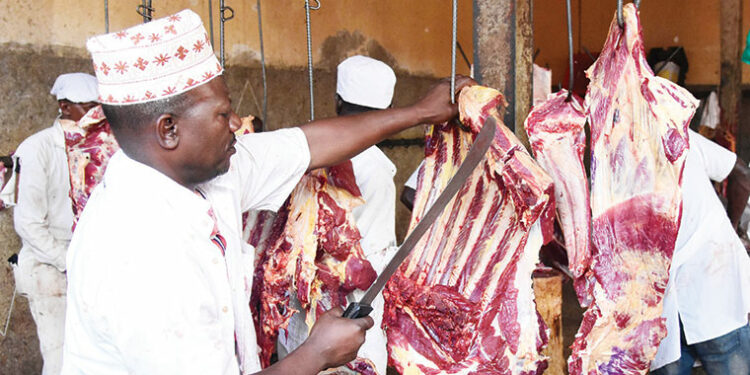In a shocking revelation, Parliament’s Health Committee has reported that the City Abattoir in Kampala, one of Uganda’s largest slaughter facilities, has remained untouched by renovation or modernization since its initial construction in 1930, despite its central role in supplying meat to the capital and surrounding areas.
The facility, which slaughters approximately 400 animals daily, was found in a dire state during recent field visits by the members of the committee. This alarming report was presented by Samuel Opio, a lawmaker from Kole North and Vice Chairperson of the Health Committee, during the meeting with officials from the Ministry of Agriculture and the Ministry of Health.
The discussion centred on the findings from visits to abattoirs and slaughterhouses across the country, revealing systemic neglect and inadequate prioritization of critical infrastructure.
Opio expressed disbelief at the government’s failure to include the Kampala abattoir in urgent renovation plans, given its scale and the health risks associated with its deteriorating conditions.
“Did you apply a risk-based assessment?” Opio questioned. “Because when you look at facilities in Kampala and Masaka, they are in a serious state of disrepair. The Kampala abattoir is one of the largest, slaughtering 400 animals daily, but it was constructed in 1930. Not even a single renovation, not even a painting, has been done. How do you prioritize these projects, and do you consider risk-based assessment?” He asked.
The committee’s findings also revealed a broader crisis, with only 45 out of Uganda’s 176 local governments possessing formal slaughterhouses. This means 131 districts are left without proper facilities for meat slaughtering, raising severe concerns about public health and food safety.
The committee expressed grave concerns about the safety of meat being consumed in districts without official slaughterhouses. The conditions in these informal slaughtering areas are largely unknown, and MPs questioned whether Ugandans in these regions are consuming contaminated or unsafe meat.
“You have indicated that only 45 districts have slaughterhouses, which implies that 131 local governments do not,” Opio said. “This raises big concerns about the quality of meat in those areas. Where is it being slaughtered? Who is inspecting it? Are we even safe to consume this meat?”
Lulume Bayiga, MP for Buikwe South, added to the concerns, recounting the disturbing state of Kampala’s abattoirs during the committee’s field visits. He revealed that the appalling conditions had to be partially censored from public view to avoid creating widespread panic about the safety of meat consumption.
“We rudely awoke Ugandans to the state of abattoirs, especially here in Kampala,” Bayiga said. “While appearing in Kalerwe, I advised the media not to broadcast all the images, because it would discourage people from eating meat. It was a rude awakening for the entire country, and we were embarrassed by the exposure of these poor conditions.”
Bayiga emphasized that this neglect reflects a larger failure by the agencies tasked with planning and regulating these critical services. He urged the government to move quickly to address the deplorable conditions that could lead to serious public health risks.
With public health at risk, MPs demanded that proper slaughtering facilities and lab-based testing be made available in all districts to ensure the meat reaching Ugandan tables is safe for consumption.
In the wake of these revelations, the Ministry of Agriculture and Ministry of Health are expected to present detailed plans for addressing the issues raised, ensuring Ugandans can trust the safety of the food they eat.
The City Abattoir’s 94 years of neglect stand as a stark reminder of the dangers of overlooking public health infrastructure.
Do you have a story in your community or an opinion to share with us: Email us at editorial@watchdoguganda.com











